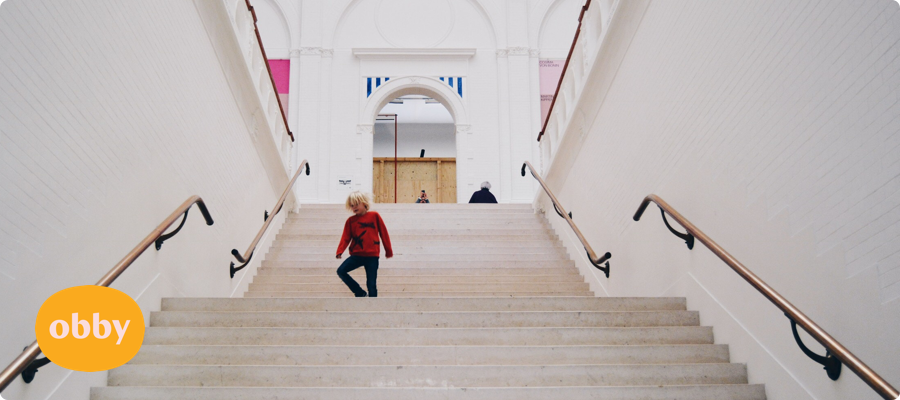
Calligraphy is the art of writing beautifully. It's a highly skilled past-time and an art that has been passed on through generations of cultures and religion. Modern Calligraphy is a recent development of the traditional scripts such as Copperplate and Spencerian. It doesn't stick to the same strict rules about the precision and form of the letters, the way the traditional scripts do. Modern Calligraphy does not just allow for the freedom and imagination of the artist, but it expects it. Though traditionalists scoff at the way modern calligraphy has developed out of the boundaries and rules of the original scripts, modern calligraphy finds accessibility and popularity in its freedom, especially online.
Modern calligraphy is a development on a traditional decorative and communicative art. It tells a story, and it is without a doubt performed by skilled practitioners, but still, it seems not to be taken seriously by the art community and especially the London galleries, museums and exhibitions. Google 'calligraphy exhibitions London' and expect nothing. The only celebrated calligraphy in museum collections are examples of historical manuscripts and religious texts. As beautiful as these are, the fact they are steeped in a rich history, seems an unfair reason as to why these are the only archetypes representing calligraphy in museums. It seems unfair that something so capable of attention online and in the community is not considered as what we should marvel at in a museum, even a modernist museum or a contemporary gallery.
Online, it's a different story. You come across calligraphy on a daily basis on blogs, websites and especially Instagram. Modern calligraphers on Instagram, have developed somewhat cult followings, with the hashtag #calligraphy totalling at 9,097,010 posts* on Instagram alone, and rising daily. Publications such as Country Living and The New Yorker have written articles about the calligraphy stars of social media and with followings of over 200k some of the calligraphers on Instagram have well and truly proved this is an art which has an interest, if not love, from the population.
Although not museums, calligraphy has been commissioned as part of huge displays in shop windows. In 2017 the Jo Malone store in Sloane Square sported a huge calligraphy display and at weddings and fashion events, place cards are always scrawled in beautiful calligraphy. The cause of under-representation is lack of experience thinks Kirstie Bird, a calligrapher in London. 'A lot of my students often say 'its a lot harder than I expected' so perhaps it's not given as much credit as it should which is why it may be under-represented,' which actually makes sense. Painting, mosaics and sculpture have been around for centuries so people know exactly how tricky it can be to master all types of painting, but because they don't know the same about calligraphy, they don't see the talent in it. It's a brutal but relevant observation.
Although modern calligraphy is fairly new, it is developing various different styles, techniques and trends, just the same as painting and other similar mediums have throughout the years. Perhaps it is solely reliant on the fact modern calligraphy is so young, that we do not yet distinguish these as trends and techniques but instead, put modern calligraphy under the wide umbrella of lettering. Modern calligraphy has failed to be picked up by critics yet. Perhaps due to a time issue, perhaps due to ignorance, but either way modern calligraphy as a form is still developing, with each new calligrapher to break the ranks bringing something new to the table. Some write in all capitals, some favour wobbly stems to their 't' and some don't like to dot the 'i', but because modern calligraphy is still in such a raw form, these are all marked as individual cases and haven't been recognised by those outside the immediate industry. The only consideration still had about modern calligraphy from the traditionalists who are represented in museums, is that it is different to what they are used to. I suppose that's the only characteristic that anyone can really claim about modern calligraphy, that it is different from the 'norm.'
The reasons for under-representation of modern calligraphy boil down to a common theme. Is it just still too modern? Could time be the answer to the under-representation that we see for modern calligraphy as an art form? Without time for momentum to surround itself around this undoubtedly worthy art form, modern calligraphy will struggle to see itself picked on by art critics, displayed by museums, ripped off by the internet and everything else that happens to art in the twenty-first century. Hopefully as the years plod on and as the artists that have settled into the art continue to make a footprint, we will start to see modern calligraphy as something celebrated for what it is and not just questioned for being different.
*As quoted on 02.08.18

